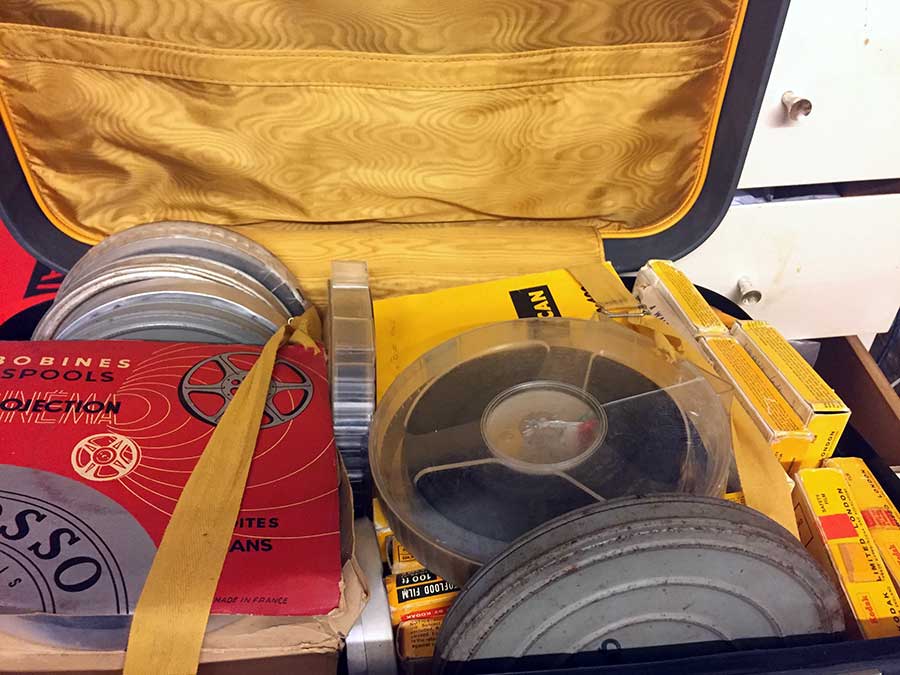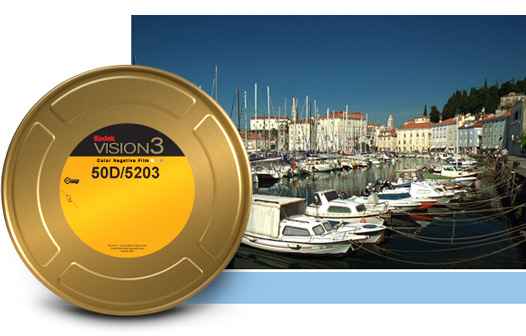16mm film transfer
16mm sound film conversion to Pro Res
16mm sound film to Pro Res.
At present Video Image Productions are in the process of converting 16mm film to Apple Pro Res format for a Hovercraft Museum.

I took the picture at the Museum of this monster. This hovercraft used to run between Dover and Calais.

A 16mm sound film refers to a motion picture film format that is 16 millimeters wide and includes a soundtrack for synchronized sound. The 16mm film format has been widely used in both professional and amateur filmmaking.
In the early days of cinema, 16mm film was primarily used for non-theatrical purposes, such as educational films and home movies. However, with the advent of synchronized sound technology, 16mm sound film became more prevalent for various applications.
Here are some key points about 16mm sound film:
- Soundtrack: 16mm sound film includes a magnetic or optical soundtrack that carries the audio information. The soundtrack runs parallel to the filmstrip and is typically located on the edge of the film.
- Professional Use: While 16mm film started as a format for amateur filmmakers, it found its way into professional use for certain applications. For example, documentaries, newsreels, and some independent films were shot on 16mm.
- Amateur Filmmaking: Many enthusiasts and amateur filmmakers used 16mm film for shooting home movies, as it provided a more accessible and affordable option compared to larger film formats.
- Magnetic and Optical Sound: The soundtrack on 16mm sound film could be either magnetic or optical. Magnetic soundtracks used a magnetic coating on the film to record audio, while optical soundtracks employed variations in light intensity to represent sound.
- Decline in Use: With the rise of digital technology and high-definition video, 16mm film has seen a decline in use for mainstream filmmaking. However, it still holds historical and artistic significance, and some filmmakers continue to use it for its unique aesthetic qualities.
- Archival Challenges: Preserving and restoring 16mm sound film can be challenging due to issues such as deterioration of the film stock and potential degradation of the sound elements. Archivists and preservationists often work to digitize and restore these films for future generations.
In summary, 16mm sound film refers to a motion picture format that combines a 16mm filmstrip with synchronized sound, either through a magnetic or optical soundtrack. While it has seen a decline in mainstream use, it remains relevant in certain niche applications and holds historical value in the world of filmmaking.
Picture above showing the 16mm sound films to be converted to Apple Pro Res.
16mm Bolex camera winding
16mm Rolex camera. Video Below showing my Bolex 16mm clockwork film camera still working very well. Not bad considering its a 1960’s camera.
Swiss engineering for you.
The 16mm Bolex camera is a brand of motion picture cameras, including those designed for 16mm film. The Bolex 16mm cameras, particularly the Bolex H16, have been widely used by amateur and professional filmmakers since their introduction in the 1930s. Here are some key features and aspects of the 16mm Bolex camera:
- Bolex H16 Model: The Bolex H16 is one of the most well-known models in the Bolex 16mm camera series. It became popular for its compact size, portability, and precision engineering.
- Spring-Drive Mechanism: One distinctive feature of Bolex cameras, including the H16, is the spring-driven mechanism. Instead of relying on batteries or external power sources, Bolex cameras use a hand-cranked spring drive for film transport and exposure.
- Interchangeable Lenses: Bolex cameras typically have a C-mount lens system, allowing users to interchange lenses. This feature provides flexibility in choosing lenses for different shooting scenarios.
- Variable Speed Control: Bolex H16 cameras often have variable speed control, allowing filmmakers to adjust the frame rate for creative effects or technical requirements.
- Compact Design: Bolex cameras are known for their compact and lightweight design. This made them suitable for handheld and documentary-style filmmaking.
- Manual Operation: Bolex cameras are primarily manual in operation. Filmmakers need to manually crank the spring for film transport and exposure. This manual aspect is considered an advantage by some filmmakers who appreciate the hands-on control.
- Legacy and Influence: Bolex cameras, especially the H16, have left a significant mark on the history of filmmaking. They were widely used by filmmakers such as Jean-Luc Godard and Dziga Vertov, and they played a role in the development of independent and avant-garde cinema.
- Availability and Collectibility: While 16mm film has seen a decline in mainstream use, Bolex cameras remain popular among collectors, enthusiasts, and some independent filmmakers who appreciate the unique qualities and craftsmanship of these cameras.
It’s worth noting that Bolex has produced various models over the years, and different models may have specific features or improvements. The Bolex H16, however, is often recognized as a classic and iconic 16mm camera.
For Information on Super 8 movie cameras.
16mm cine film conversion to digital video
16mm cine film conversion to digital video.
Introduced by Eastman Kodak in 1923, 16mm film was initially designed for amateur and low-budget filmmaking. Over the years, it gained popularity in educational, industrial, and documentary productions. During the mid-20th century, it served as an accessible medium for filmmakers.
16mm film found widespread use in schools, as it allowed educators to create educational content easily. In the 1960s and 1970s, avant-garde filmmakers embraced it for its cost-effectiveness and unique aesthetic.
With the rise of digital technologies, 16mm film faced decline but retained its appeal in niche filmmaking circles due to its distinct visual qualities. Today, it holds a place in the history of film technology, marking an era when film formats were diverse and evolving.
16mm film conversion
16mm film conversion.

Video Image Productions is in the process of providing a 16mm film conversion to AVI files. This process involves scanning the 16mm film directly into our work station PC.
AVI.
For 16mm film conversion to Windows PC. Our preferred video format is AVI. This video format is what we video editors call a editing format. Finishing formats like Mpeg 4 and Mpeg 2 are better suited to authoring DVD’S and Blu-ray discs.
Cleaning your 16mm film conversions.
All our cine reels are cleaned before scanning. We don’t use harsh chemicals which could harm the emulsion of the film.
Advantages of 16mm film conversion to hard drive.
Once the films have been transferred to our computers hard drive. We then transfer the files to an external hard drive. Now the films are in the digital domain. Once you receive your drive we recommend copying the files to your computers hard drive.
My options.
From here you can upload the videos to YouTube. Edit the video in any video editing software you choose. Email the videos to family members. Send the videos over the Internet via services such as wetransfer.com. This is a free service that allows you to send up to 2 Gig of data over the net.
Video Image Productions also provides a video editing service. If you want to us to edit you home videos or cine film transfers. We can send you a edited version of your old movies on digital video. During editing background music, titles and colour correction can all be added to improve the viewer experience.
DVD duplication.
If you would prefer to have your 16mm film conversion on DVD then we also provide a DVD duplication service. We can provide DVD copies from 2 to 2000. All DVD copies come with Amaray professional library cases, Full DVD face colour printing on industry standard DVD-R water shield discs.
16mm film Frame 24 suppliers UK
I have just come across a company that supplies 16mm Kodak film in the UK.

The company is called Frame 24. They sell 16mm process paid stock. These come in two options of 100ft or 400ft lengths.
Packages Include.
Details taken from their website.
1 x 100ft roll of Vision3 Negative
Negative Developing
Ultra Sonic Clean & Prep For TK
Best Light Transfer to Industry Standard HD Edit Formats. (Apple Pro Res, or Avid Media compatible MXF files)
Transfer to FTP Site*, Disk or Hard Drive (hard drive not supplied by Lab, product can be purchased below).
Post Production can be either done through Cinelab or idailies in the UK.
16mm film supplied is Vision 3 50d, Vision3 200T, Vision3 500T.
On the 400ft film options you can also purchase Kodak 16mm film Vision3 250D.
All prices Include process paid.
As well as providing 16mm film they also supply 35mm kodak film. These come in 400ft and 1000ft lengths.
As you probably know we provide a 16mm film to DVD and digital HD video scanning service for 16mm film. The HD video formats we supply for computer editing, Include Apple Pro Res, MPEG4, H.264 and AVI for PC video editing.
If you are looking to shoot your next film on film. Then 16mm produces a truly unique cinematic image.
Guy Richie. Shot Lock Stock and 2 Smoking Barrels on 16mm film. It was later blown up to 35mm film for cinema release. Many budding film makers started out on 16mm film. Although HD video has now come of age. Many film makers, including myself still prefer the organic look and grain of film.
Arri film cameras are considered one of the best 16mm film cameras available today. Look for a second hand camera and start making films.
Link to Frame 24 for film stock supplies. http://www.frame24ltd.co.uk/